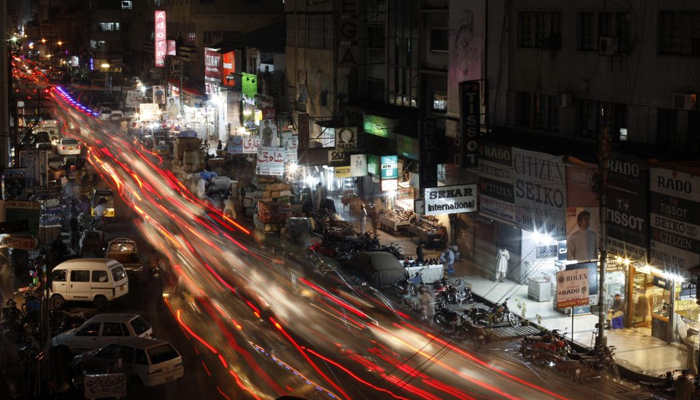Base tariff hike in FY24: Power consumers to pay extra Rs3.2tr
Increase in power tariff is key condition set by IMF for providing financial assistance to Pakistan
July 11, 2023

- Increase in tarrif a key condition of IMF financial assistance.
- IMF Executive Board will meet on July 12 to discuss loans.
- Rise in power tariffs will have significant impact on consumers.
ISLAMABAD: The government is set to collect an additional staggering amount of over Rs3.2 trillion from power consumers, beginning July 2023, as it intends to raise the power base tariff by approximately Rs7 per unit for the fiscal year 2023-24, according to official sources of the Power Division.
Interestingly, the International Monetary Fund (IMF) Executive Board is scheduled to convene on July 12 to discuss a nine-month stand-by arrangement.
This meeting will serve as the final step in solidifying the agreement outlined in the IMF Staff Level Agreement. Subsequently, it will be the government's responsibility to fulfill the programme's requirements in the days ahead.
The increase in power tariff is a key condition set by the IMF for providing financial assistance to Pakistan. The Fund has been urging the government to raise the tariff and eliminate power subsidies to reduce the country's fiscal deficit.
The proposed increase, calculated by Nepra, along with an additional 18% GST on bills, could result in a staggering amount being collected from power consumers starting in July 2023.
Nepra has already conducted hearings with the distribution companies (Discos) regarding this issue.
However, the K-Electric being a privatised company, will be insulated, but the price of electricity it draws from the national grid will become costlier.
Nepra has not yet submitted its work to the federal government to notify it, an official in the power sector informed The News that "the increase in base tariff will be nearly Rs7 per unit and will be implemented in one go from July 2023.
It will have an impact of over Rs3.2 trillion on power consumers. Last year's base tariff increase of Rs7.91 per unit had an impact of Rs2.8 trillion, but it was implemented in three parts at intervals."
If the proposed increase was finalised, the decision would raise the base tariff to Rs31.80 per unit from the current Rs24.80.
Notably, nearly two-thirds of this proposed increase in the base tariff is allocated for capacity charges to independent power producers (IPPs), aiming to significantly reduce the pace of the power sector's circular debt accumulation.
The circular debt currently stands at approximately Rs2.64 trillion and continues to grow due to inefficiencies in power generation, transmission, and distribution.
The rise in power tariffs will have a significant impact on consumers in various sectors, including residential, commercial, and industrial. Businesses will need to pass on the cost of higher power bills to consumers, leading to inflation.
Households will also have to allocate more funds for power, putting a strain on their budgets.
While the government acknowledges the impact the increase in power tariff will have on the people, it asserts that this step is necessary to revive the power sector and the economy.
The government has also pledged to provide targeted subsidies to alleviate the burden on the poor and vulnerable.
As of the end of last month, the government has made a payment of Rs142 billion to over a hundred Independent Power Producers (IPPs).
This payment has had a positive effect on power producers, reducing their outstanding dues and improving their cash flows.
The power sector is already grappling with a massive circular debt of Rs2.64 trillion. Additionally, the IMF has called for a 45-50% increase in gas tariffs starting from July 1, 2023.
Consumers of Sui Northern Gas Pipelines Limited (SNGPL) and Sui Southern Gas Company Limited (SSGCL) will experience higher gas prices.
The government is likely to continue its policy of having high-end consumers subsidise low-end consumers.
The circular debt in the energy sector totals over Rs4.30 trillion, including Rs1.7 trillion in debts from the oil and gas sector.
Finance ministry and Nepra officials on Monday spent the day in confusion with regard to the finalisation of the increase in base tariff, knowing the fact that the IMF board meeting is just one day ahead and will take place tomorrow (July 12).
The regulator's top mandarins continued waiting for the projections about the dollar's value, GDP growth, and inflation from the finance ministry to be used to finalize the base tariff.
Earlier, the tariff department used the dollar value at Rs325 for FY24, with a dip in the sale of electricity growth in 2023-24 projected by CPPA-G. Keeping in view the above-mentioned projections, Nepra worked out the increase in base tariff at Rs6.91 per unit. Earlier, it worked out the increase in base tariff by over 4 per unit.
The federal government has made the federal budget with the US dollar value of Rs290 billion with GDP growth of 3.5% and inflation at 21%.
However, according to an interview with Finance Minister Senator Ishaq Dar, on a private channel, the dollar's actual value stands at Rs240, which the government would try to achieve.
Originally published in The News












